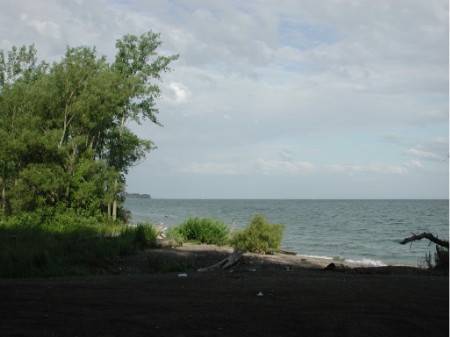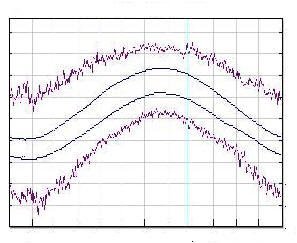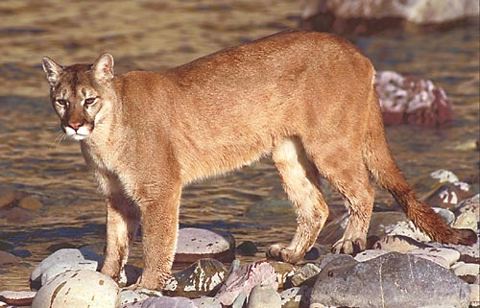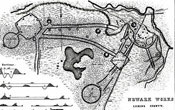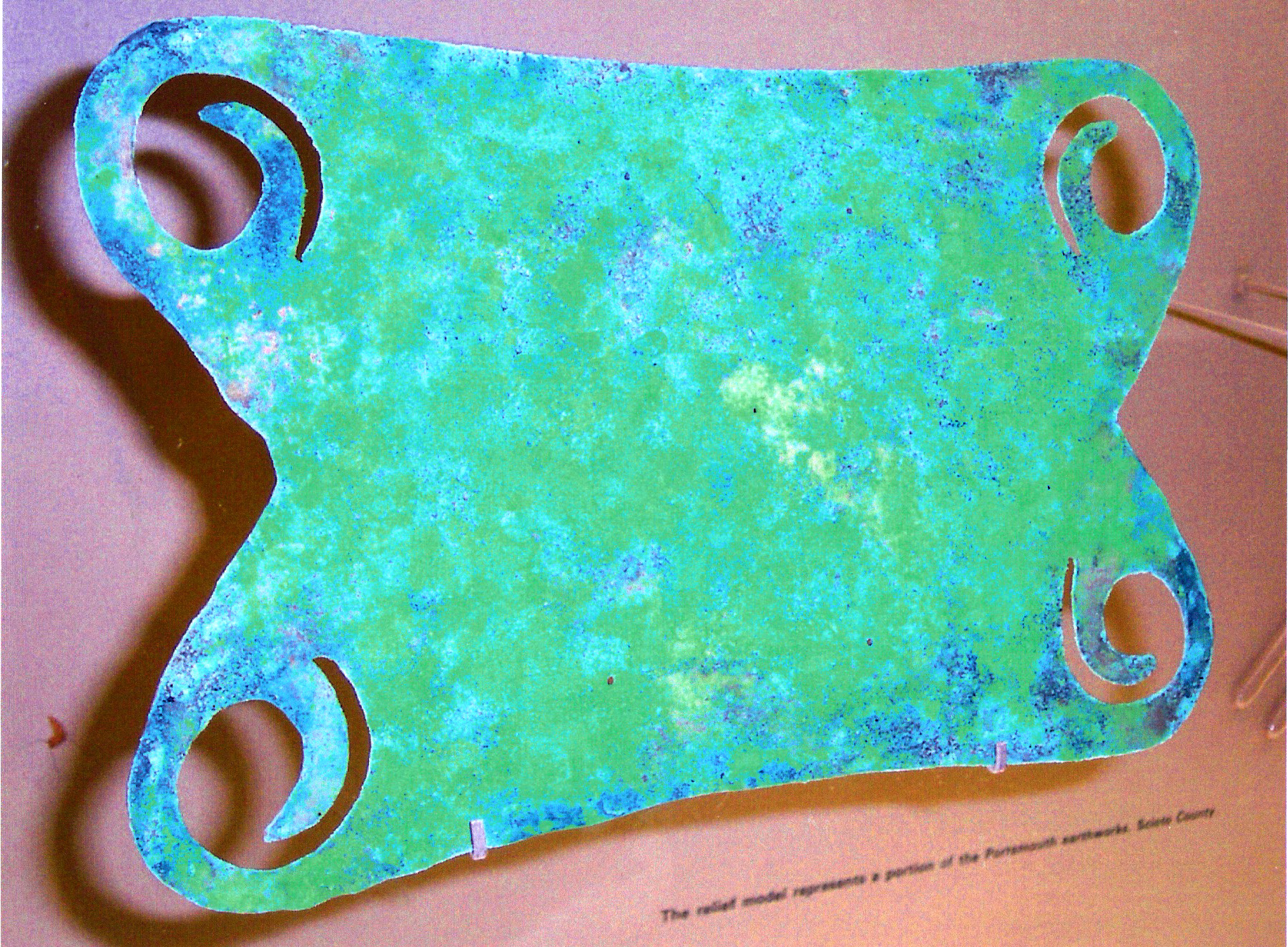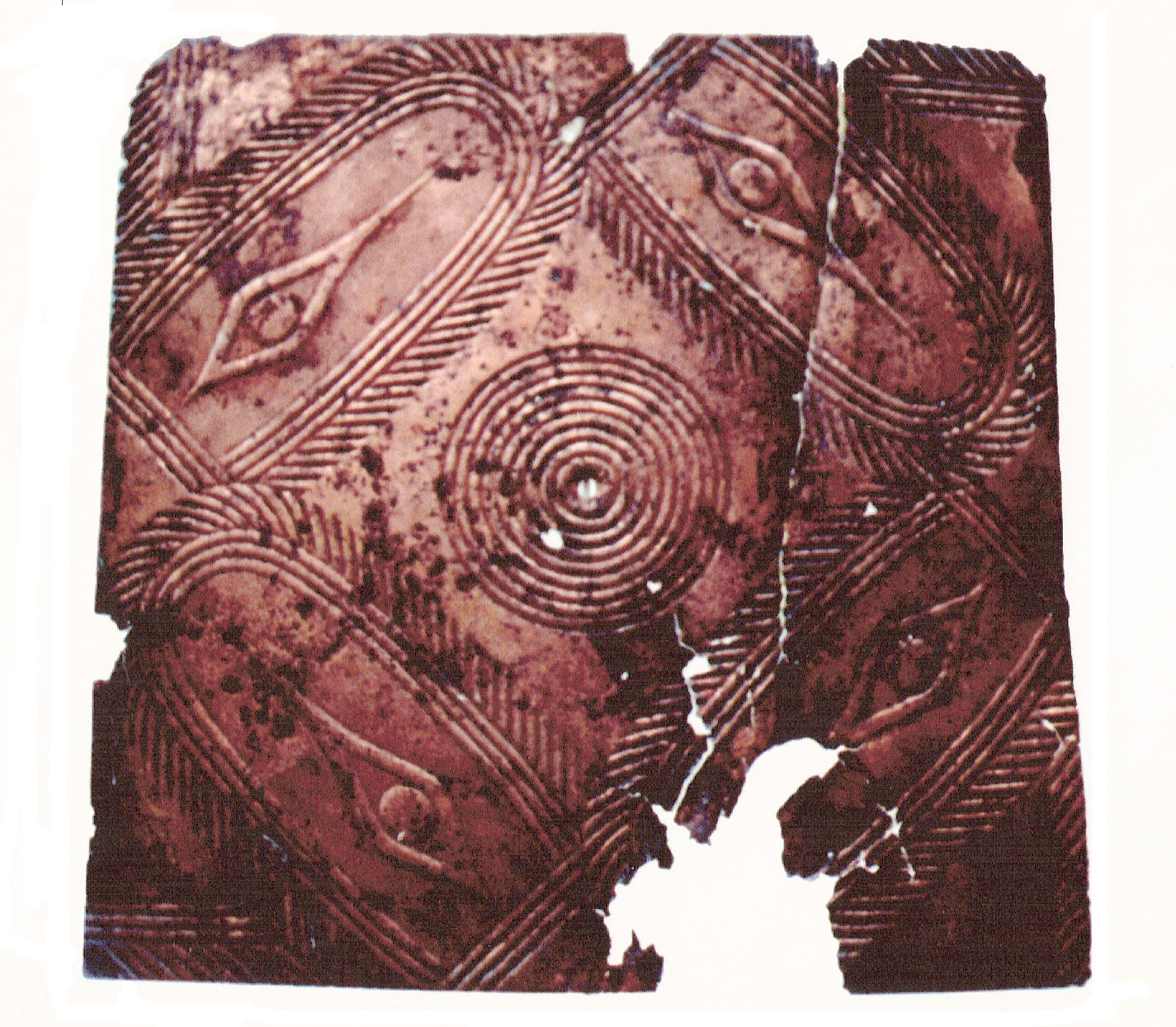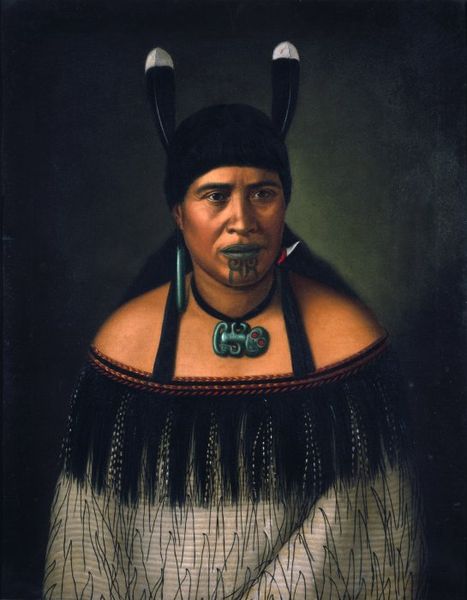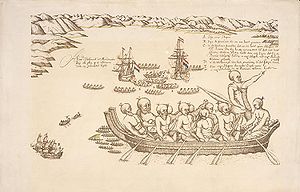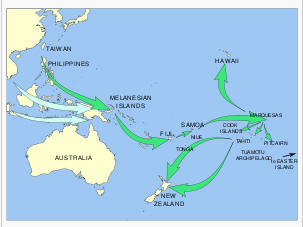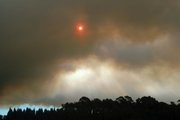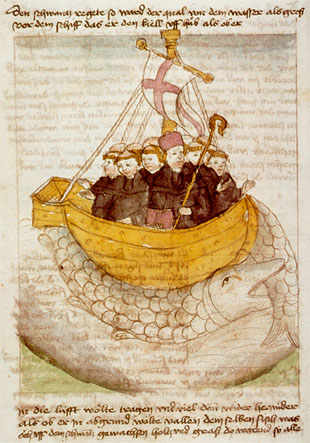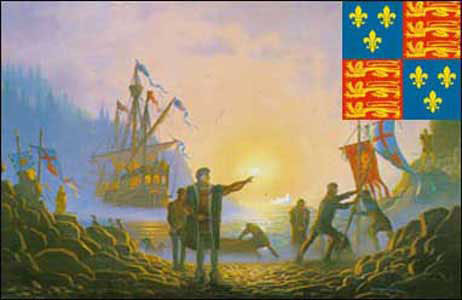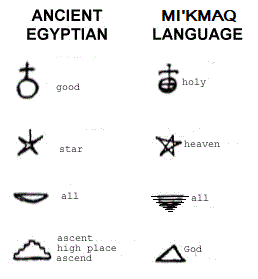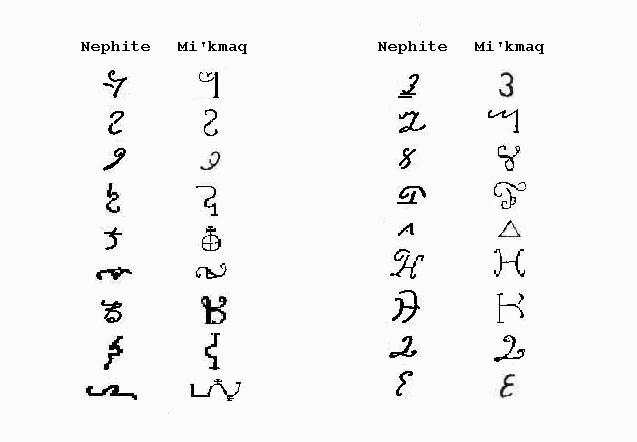CHOICE ABOVE ALL OTHER
LANDS
Book of Mormon Covenant Lands
According to the Best Sources
|
Questions & Answers |
|
Questions and Answers |
Accompanying Scripture |
|
Vast Indian and Pacific Oceans or Atlantic Crossing? Q:
Can we
conclude from
1 Nephi 17:1 and
Alma 22:28
that Lehi crossed the Indian and |
"And it came to pass that we did again take our journey in the wilderness; and we did travel nearly eastward from that time forth..." (1 Nephi 17:1)
"...the
Lamanites lived ...on the west, in the land of Nephi; yea,
and also on the west of the land of Zarahemla, in the borders by the
seashore, and on the west in the land of Nephi, in the place of their
fathers' first inheritance, and thus bordering along by the
seashore." (
|
|
Which Small Neck? Q:
Can
we conclude from references to the "small" or "narrow
neck of land" ( |
"...thus
the land of Nephi and the land of Zarahemla were nearly surrounded by
water, there being a small neck of land between the land northward and the
land southward."
(Alma
22:32) |
|
Oceans or Seas? Q:
Does
"isle of the sea" have to mean that the seas bordering the
lands of Zarahelma and Nephi were all oceanic bodies of water?
Lake Ontario (Waters of Ripliancum) |
"...we
have been led to a better land, for the Lord has made the sea our
path, and we are upon an isle of the sea.
"But
great are the promises of the Lord unto them who are upon the isles of the
sea; wherefore as it says isles, there must needs be more than
this, and they are inhabited also by our brethren." (2
Nephi 10:20-21) "...the Lord shall set his hand again the second time to recover the remnant of his people...and from the isles of the sea (i.e. from the coasts, regions, borders, habitable lands of the sea = "oo-me-iyey ha-yam" = הַיָם וּמֵאִיֵי)". (Isaiah 11:11, 2 Nephi 21:11) "Wherefore glorify ye the LORD in the fires, even the name of the LORD God of Israel in the isles of the sea (in the coasts, regions, borders, habitable lands of the sea = be-iyey ha-yam = בְּאִיֵי הַיָם)." (Isaiah 24:15, KJV)
"Sing unto LORD a new song, and his praise from the end of the earth, ye that go down to the
sea and all that is therein; the isles
(coasts, regions, borders, habitable lands = iyim =
אִיִים
|
|
Tropical Jungles or Temperate Forests? Q: Must we conclude from the
references to "fevers" and "nature of the climate"
that Book of Mormon lands are tropical? Does "...some seasons
of the year" mean all seasons of the year, that is, the two
tropical seasons - the wet and dry season? |
"And
there were some who died with fevers, which at some seasons of
the year were very frequent in the land - but not so much so
with fevers, because of the excellent qualities of the many plants and
roots which God had prepared to remove the cause of diseases, to which men
were subject by the nature of the climate-" (Alma
46:40) |
|
Springtime HEAT INDEX! Q: Must we conclude based on the reference to
"heat
of the day", that Book of Mormon lands are located in the tropics? People living in mid-latitudes can occasionally experience heat indices in the 80 - 90 F range in the spring and early summer, prior to barley harvest. Prolonged activity, while exposed to these heat indices, can cause fatigue. Evidence indicates that winters were milder in western New York for much of the Book of Mormon period. (William A Ritchie, Indian History of New York State, Ed Leaflet, No. 6) Even in modern times, western New York occasionally sees a warm humid spring day with a heat index above 80 F. The scripture says "heat of the day", not heat of the season! There is no scriptural indication that the first of the year was always hot. |
"...and
behold, sleep had overpowered them because of their much fatigue, which
was caused by the labors and heat of the day...thus
ended the twenty and fifth year..."
(
|
|
Driven Snow! Q: Must we conclude that Nephi's expression, "whiteness
of the driven snow" is merely a quote from Isaiah? |
"...and
the whiteness thereof did exceed the whiteness of the driven snow."
(1 Nephi 11:8) |
|
Leopards or Lions in the Promised Land? Q: Is Nephi's reference to "the leopard"
proof that jaguars inhabited the |
"And
then shall the wolf dwell with the lamb; and the leopard shall lie
down with the kid, and the calf, and the young lion, and the fatling
together; and a little child shall lead them." (2
Nephi 30:12; 21:6 same as
Isaiah 11:6)
Mountain Lion |
|
Zarahemla Highway! Q: Does
Helaman 7:10 necessarily allude to an ancient Mesoamerican or
South American highway? |
"...it
was upon a tower, which was in the
|
|
CEMENT HOUSES! Q: Must
"cement" mean the cement made by
ancient Mesoamericans? |
"And
the people...did dwell in tents, and in houses of cement, and
they did suffer whatsoever tree should spring ...that it should grow
up, that in time they might have timber to build their houses, yea, their
cities, and their temples, and their synagogues, and their sanctuaries,
and all manner of their buildings." (Helaman
3:9) "...there
indeed did I behold the plates, the Urim and Thummim, and the breast plate...The
box in which they lay was formed by laying stones together in some kind
of cement..." (JSH 1:52 |
|
Wood and Metal Works! Q: Can
we conclude that Nephi constructed a temple of hewn stone in fashion
like the one Solomon built?
Mound Builder
Copper Breastplate
|
"And
I did teach my people to build buildings and to work in all manner of
wood, and of iron, and of copper, and of brass, and of steel..." "And
I Nephi, did build a temple; and I did construct it after the manner of
the
|
|
Hagoth's Lost Ships! Q:
Does the Book of Mormon say that Hagoth's ships
sailed out into the
Verse 4 tells us that
exploration and occupation of “the land northward” started before Hagoth
built his ships. The Book of Mormon does not say that the main purpose
of the ships was to voyage to uncharted lands.
Verse 5 describes Hagoth as an “exceedingly
curious man”. The English word “curious” comes from the Latin words “curiosus”
and “cura” meaning “careful” and “care”. This
word is commonly taken to mean “interesting” or “inquisitive”, “singular” or “odd”.
An old use of the word, however, means “accomplished with skill
and ingenuity”. This is closer to the meaning translated from ancient
scripture.
(Psalm 139:15,
Exodus 35:32) The Hebrew terms in “curious
work” and “curiously wrought” relate to words for “weave” and
“embroider”. The processes of “thinking”, “contriving”, “planning”, and
“fabricating”, are implied. Interpreting “curious” to mean “accomplished
with skill and ingenuity” is consistent with how it is used throughout
the Book of Mormon.
(1 Nephi 16:10;
18:1,
Alma 37:39,
Helaman 6:11, and
Ether 10:27)
Being “an exceedingly curious man, therefore he went forth and built him
an exceedingly large ship…” describes Hagoth’s engineering genius. He,
like Nephi, must have worked “timbers of curious workmanship”.
(1 Nephi 18:1, see also
Helaman 6:11) The Book of Mormon nowhere says that Hagoth was an explorer
of strange new lands or the leader of a group of immigrants.
Verse 5 of
Verse 6 does
not say that Hagoth captained or was even onboard the vessel that sailed
northward.
Verse 7 can be
interpreted to mean that Hagoth, the entrepreneur ship builder, stayed
ashore designing and building more ships. It is also possible that he
traveled to other locations and built ships there. Perhaps the Nephites
could sail aboard a ship to the land northward, commute over land and
take another ship (also built by Hagoth) out to the Ocean. The verse
does not say. Verse 8 does not say that the first ship which was boarded was the same ship which presumably sank. The occupants may have boarded yet another vessel once they arrived in the land northward before presumably drowning “in the depths of the sea.”
The expression "depths of the sea" doesn't necessarily
mean ocean deep.
The expression implies a sea deep enough to drown in.
Nephi tells us that his brothers
intended to "throw him into the depths of the sea", but that was
from the shore.
(1 Nephi 17:48)
The
Book of Mormon also tells of coastal cities that were "sunk in the
depths of the sea".
(3 Nephi 8:9)
While on "the In summary: The Book of Mormon does not equate the “west sea” with the Pacific Ocean. The Book of Mormon does not tell us that Hagoth was onboard any of the ships that were lost. Scripture does not say that he captained a vessel or that he was an explorer or an adventurer, or that he led people. The skilled Hagoth’s main objective may have been to profit from the shipping industry.
It is conceivable that peoples in various places could be
related to Hagoth’s people (the Nephites) without Hagoth personally
making an ocean voyage.
|
4
And it came to pass that in the thirty and seventh year of the
reign of the judges, there was a large company of men, even to the
amount of five thousand and four hundred men, with
their wives and their children, departed out of the
5
And it came to pass that Hagoth, he being an
exceedingly curious man, therefore he went forth
and built him an exceedingly large ship, on the borders of the
land
6
And behold, there were many of the Nephites who did enter therein
and did sail forth with much provisions, and also
many women and children; and they took their course northward.
And thus ended the thirty and seventh year.
7
And in the thirty and eighth year, this man
[Hagoth] built other ships.
And the first ship did also return, and many more people did
enter into it; and they also took much provisions, and set out again to
the land northward.
8
And it came to pass that they were never
heard of more.
And we suppose that they were drowned in
the depths of the sea.
And it came to pass that one other ship
also did sail forth; and whither she did go we know not.
|
|
VOLCANO! Q: Must we attribute the great destruction and
darkness that befell Book of Mormon lands, to a hurricane and local
volcanism? A meteor or comet airburst (similar to the Tunguska Event of 1908) could have unleashed the diverse modes of destruction described in 3 Nephi: fire from the sky, bright flashes and lightning, claps of thunder and rumbling, seismic shocks and after shocks, strong gusts, "tempest" and "whirlwinds" (tornados), destructive waves, forest fires, clouds of smoke and water vapor. Much smaller (600 ton TNT equivalent) airburst have occurred over the Great Lakes region in recent history. ("Tunguska Event", Wikipedia) Certainly smoke contributed to the cover of darkness experienced by Book of Mormon peoples. Persistent banks of water vapor may have also been present. This could explain references to both "vapor of smoke" and "vapor" or "mists of darkness"? (3 Nephi 8:22; 10:13; 1 Nephi 19:11) Dry wood taken out into a steamy atmosphere may not kindle even if the heavy mist is laden with enough oxygen to support human respiration. (3 Nephi 8:21) The LORD said, "...O Israel, thou shalt not be forgotten by me. I have blotted out, as a thick cloud, thy transgressions, and, as a cloud, thy sins: return unto me; for I have redeemed thee." (Isaiah 44:21-22 3 Nephi 10:5) The "three days of darkness" was a sign "more especially" given to the house of Israel inhabiting the "isles" (coasts) of the sea. (1 Nephi 19:10) It is also worth considering extraordinary local events described in scripture involving obscuring clouds, which do not seem to be tied to volcanism: Helaman 5:23-49 Exodus 13:21-22; 14:19-20, 24; 19:9, 16, Numbers 9:15-22, Psalm 105:39, Matthew 17:5, Acts 1:9, Mosiah 27:11, 3 Nephi 18:38, Ether 2:4-5, 14.
Tempests, tornadoes and earthquakes all potentially
threaten the northeastern Of course nature and
the Almighty are quite able to subject western It is a historical fact that the regions of Canada, just to the north of New York, have experienced not only very violent earthquakes but also enigmatic episodes of daytime darkness so profound and extensive that observes, right or wrong, have attributed the phenomenon to volcanism. The Historical Magazine of 1864, cites several well documented examples and presents the opinions of notable witnesses of the phenomenon. ("New England's Dark Day", Wikipedia) |
"...in the first month, on the fourth day of the month, there arose a great storm.." "And
there was also a great and terrible tempest; and there was terrible
thunder, insomuch that it did shake the whole earth..." "And there were exceedingly sharp lightnings, such as never had been known in all the land." "And
the city of "But
behold, there was a more great and terrible destruction in the land
northward; for behold, the whole face of the land was changed, because of
the tempest and the whirlwinds, and the thunderings and the
lightnings..." "And
the highways were broken up, and the level roads were spoiled..." "And
many great and notable cities were sunk, and many were burned..." "And...when
the thunderings, and the lightnings, and the storm, and the
tempest, and the quakings of the earth did cease-...here was darkness
upon the face of the land..." (3 Nephi 8:5-8, 12-14, 19) "And
now, whoso readeth, let him understand...let him search them [the
scriptures], and see... if all these deaths and destructions by
fire, and by smoke, and by tempests, and by whirlwinds,
and by the opening of the earth...are not unto the fulfilling
of the prophesies of many of the holy prophets." (3
Nephi 10:14)
Smoke from a wildfire starting to obscure the sun
|
|
Quetzalcoatl
Legends! Q:
Based on Central American legends and LDS scripture,
can we say conclusively
that Lehi's covenant land of liberty is in
|
"...and behold they saw a Man descending out of heaven..." "And...he
stretched forth his hand and spake unto the people, saying:" |
|
Man among the Gentiles Q: Based on Nephi's vision, must we conclude that
Lehi's Promised Land is one of the lands visited by Legends of the 6th century sea faring monk, Saint Brendan, the Navigator may be based on fact. According to the old accounts, Saint Brendan and fellow Irish monks sailed the North Atlantic in search of the "Promised Land of the Saints". Brendan may have actually succeeded in reaching the shores of America and in contacting native peoples. In 1976, explorer Tim Severin constructed a boat similar to that described in the legends of the Navigator saint. Severin successfully sailed his vessel to North America along the route believed to have been taken by Saint Brendan and his crew. Legendary accounts of Brendan the Navigator became well known in Europe. The Norse (Christian Leif Ericsson and others) visited North America centuries before the birth of Columbus. Norse voyages and encounters with Native Americans became the stuff of inspiring sagas. John Cabot (Giovanni
Caboto) sailed across the Atlantic to |
"And
I looked and beheld a man among the Gentiles...and I beheld the
Spirit of God, that it came down and wrought upon the man; and he went
forth upon the many waters, even unto the seed of my brethren, who were
in the promised land." (1
Nephi 13:12) Saint Brendan and the Whale
John Cabot is credited with the discovery of the North American continent - not Christopher Columbus! |
|
An Exceedingly Great Distance........! Q: Is it possible for Zarahemla to be in Guatemala given the
scriptural location of Cumorah at
the Finger Lakes?
An
"exceeding great distance" for old and young afoot, does not
have to mean thousands of miles?
|
"I
[Limhi] caused that forty and three of my people should take a journey...that
thereby they might find the
"And they were lost in the wilderness...having traveled in a land among many waters...having
discovered a land which had been peopled..."
"...and they, having supposed it
to be the
"...I, Mormon...hid up in the hill
Cumorah all the records..." (Mormon
6:4-6) |
|
Native American Writing Q: Does the fact that writing existed among ancient Mesoamerican cultures prove Book of Mormon lands are in Central America? A: No! Characters copied from the Book of Mormon plates resemble North American Mi'kmaq script much more closely than Mayan glyphs. According to Mi'kmac oral tradition, the Mi'kmac characters were used anciently. Moroni's comments in Mormon 9:32-34 give us to understand that the plates were inscribed with the peculiar written language of the Nephite people: "...in the characters which are called among us the reformed Egyptian, being handed down and altered by us, according to our manner of speech." Elsewhere
A recommended source of Mi'kmaq characters (also spelled Micmac): Mi'kmaq Hieroglyphic Prayers, Readings in North America's First Indigenous Script, edited and translated by David L. Schmidt and Murdena Marshall, Nimbus Publishing, Copyright 2006.
|
"And now, behold, we have written this record according to our knowledge, in the characters which are called among us the reformed Egyptian, being handed down and altered by us, according to our manner of speech." "And
if our plates had been sufficiently large we should have written in Hebrew...and
if we could have written in Hebrew, behold, ye would have had no
imperfection in our record. "But
the Lord knoweth the things which we have written...and because that
none other people knoweth our language...he hath prepared means for
the interpretation thereof."
The
above Nephite symbols come from the "Charactors" transcript (early Mormon
transcript of characters copied from the Book of Mormon plates). Though
the spoken language of the Mi'kmaq people of northern See Beware of Mark Hofmann’s Anthon Transcript Forgery!
|
Copyright © 2008 by W. Vincent Coon
